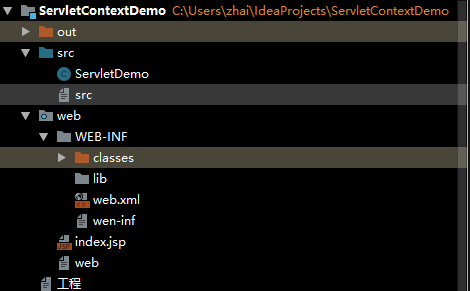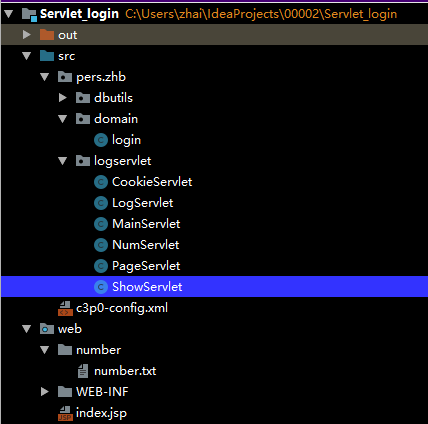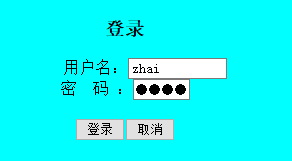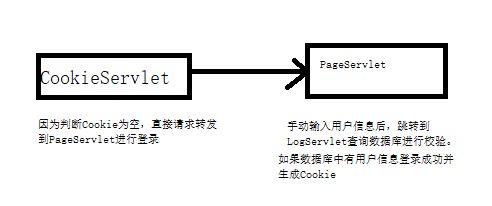一、ServletContext对象
每一个Web工程对应于一个ServletContext对象,此对象代表web应用,由服务器创建,可以解决不同用户的数据共享问题。
1、生命周期:
创建:web应用被加载到服务器或服务器开启。
销毁:web应用被移除或服务器关闭。
2、对象的获取:
(1)实现Servlet接口的类内部:
public void init(ServletConfig servletConfig) throws ServletException {
ServletContext servletContext= servletConfig.getServletContext();
}
(2)getServletContext():
protected void doGet(HttpServletRequest request, HttpServletResponse response) throws ServletException, IOException {
ServletContext servletContext=getServletContext();
}
(3)通过Session获取:
ServletContext servletContext=request.getSession().getServletContext();
3、ServletContext对象的应用:
(1)获得初始化参数(web.xml的全局数据):
<servlet>
<servlet-name>MyServlet</servlet-name>
<servlet-class>ServletDemo</servlet-class>
</servlet>
<servlet-mapping>
<servlet-name>MyServlet</servlet-name>
<url-pattern>/abc</url-pattern>
</servlet-mapping>
<context-param>//一组标签只能存储一组键值对
<param-name>zhai</param-name>
<param-value>zhai1997</param-value>
</context-param>
protected void doGet(HttpServletRequest request, HttpServletResponse response) throws ServletException, IOException {
ServletContext servletContext=getServletContext();
String paramvalue=servletContext.getInitParameter("zhai");//由键获取值
System.out.println(paramvalue);
}

如果数据不存在,返回NULL。
(2)获得工程发布后的绝对路径:
protected void doGet(HttpServletRequest request, HttpServletResponse response) throws ServletException, IOException {
ServletContext servletContext=getServletContext();
String realpath=servletContext.getRealPath("/web.text");
System.out.println(realpath);
String realpath1=servletContext.getRealPath("/WEB-INF/wen-inf.text");
System.out.println(realpath1);
String realpath2=servletContext.getRealPath("../工程.text");
System.out.println(realpath2);
}


getRealPath的参数为相对于web的路径,因为发布到服务器的时候只发布web文件中的内容,因此:工程.text文件不能被访问到。
(3)域对象(作用范围为整个web应用)
Servlet1:创建ServletContext对象设置键和值(数据存储):
protected void doGet(HttpServletRequest request, HttpServletResponse response) throws ServletException, IOException {
ServletContext servletContext=getServletContext();
servletContext.setAttribute("name","zhai");
}
Servlet2:由键获取值:
String attribute=(String)this.getServletContext().getAttribute("name");
System.out.println(attribute);
}
需要先访问Servlet1设置键和值,再去访问Servlet2获取值。如果不存在返回NULL。

二、ServletContext对象应用——三天免登录(记录访问次数)
1、用到的知识点:
(1)Cookie
(2)Session
(3)ServletContext

其中Cookie和Session是会话技术的组成部分,一次会话从打开浏览器的某个站点开始,到浏览器关闭为止。如打开浏览器中的淘宝时一次会话开始,关闭浏览器的时候此次会话结束。
要想实现三天免登录记录网站访问次数的功能,只有Cookie和Session技术是不行的,因为Cookie实现的的是免登录功能。通过创建Cookie,生成了Cookie文件,在下次登录时可以直接读取Cookie中的用户信息,不用重新输入账户和密码。Session的运用解决的是不同请求的数据共享问题,即创建了Session后,在访问不同的页面的时候,可以通过Request对象获取Session的值。
要想记录页面访问的次数,要用到ServletContext技术,可以解决不同用户的数据共享问题。即ServletContext中的值是所有用户共享的。可以获取或修改值。
2、过程分析:
第一次登录(没有Sessio和Cookie):


需要进行手动登录。

首次登录后(Cookie未过期之前)登录:

MainServlet的运行结果:

因为Session的运用在CookieServlet中存储的Session中的数据,在MainSewrvlet中依旧能够调用。
由于SertvletContext的运用,浏览量会递增,不会因为浏览器、服务器的关闭而造成数据从0开始增加。
3、代码分析:
CookieServlet:
protected void doGet(HttpServletRequest request, HttpServletResponse response) throws ServletException, IOException { request.setCharacterEncoding("utf-8"); response.setContentType("text/html; charset=utf-8");//设置浏览器编码格式 Cookie[] cookies=request.getCookies(); Connection con=null; login log= null; int successNum=0; try { con= C3p0Utils.getConnection(); QueryRunner qr = new QueryRunner(); String sql = "Select * from login"; List<login> list = qr.query(con, sql, new BeanListHandler<login>((login.class))); if(cookies!=null) {//验证数据库中是否有与Cookie对应的用户 for (int i = 0; i < list.size(); i++) { log= list.get(i); for (Cookie cookie : cookies) { if((log.getAccount().equals(cookie.getName()))&&(log.getPassword().equals(cookie.getValue()))){ HttpSession httpSession=request.getSession(); httpSession.setAttribute("login",log); ServletContext servletContext = this.getServletContext();//获取ServletContext对象 if((servletContext.getAttribute("contextNum"))!=null) { int num=Integer.parseInt(servletContext.getAttribute("contextNum").toString()); num++; servletContext.setAttribute("contextNum",num);//将int类型的num储存到contextNum }else{ servletContext.setAttribute("num",1); } successNum++; } } } if(successNum>=1){ response.sendRedirect("/Servlet_login_war_exploded/main"); } else{ request.getRequestDispatcher("page").forward(request,response); } } else{ request.getRequestDispatcher("page").forward(request,response); } } catch (SQLException e) { throw new RuntimeException(e); } }
有Cookie则用数据库校验,成功直接进入主页面,并生成Session和ServletContext,不成功则请求转发到登录页面重新进行登录。
MainServlet:
login log= (login) request.getSession().getAttribute("login"); int num=(int)this.getServletContext().getAttribute("contextNum");
通过Session和ServletContext获取CookieServlet中的数据。
LogServlet:
try { con=C3p0Utils.getConnection(); QueryRunner qr = new QueryRunner(); String sql = "Select * from login where account=? and password=?"; Object[] select = {account,password}; log = qr.query(con, sql, new BeanHandler<login>((login.class)), select); if(log!=null){ response.getWriter().write("nihao"+account); Cookie cookie=new Cookie(account,password); cookie.setPath("/Servlet_login_war_exploded/cookie"); cookie.setMaxAge(3*24*3600); response.addCookie(cookie); } else{ response.getWriter().write("wrong"); }
是在无Cookie或数据库校验失败的情况下调用的,数据库中有用户信息则生成Cookie。
4、问题分析(类型转换错误):
错误代码:
int num=(int) this.getServletContext().getAttribute("contextNum");
原因:this.getServletContext().getAttribute("contextNum")为Object类型,需要先转换为String类型,再转换为int类型:
int num=Integer.parseInt(servletContext.getAttribute("contextNum").toString());